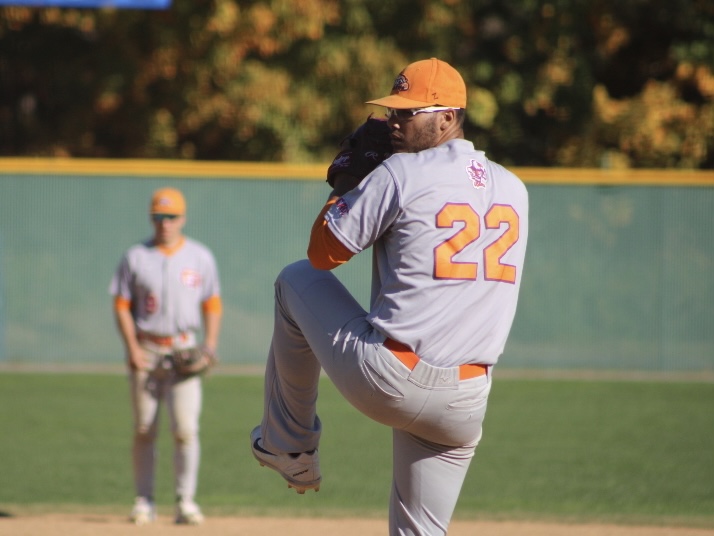
Nate Byrd, 6’4″ Senior RHP from Post University, has had quite the story as a collegiate baseball player. After topping 93 mph as a freshman in Junior College, injuries plagued the right hander who had 2 elbow surgeries in a 5-year span, resulting in velo loss with him not seeing 90 mph in over 3 years. Nate came in-house this past summer with the goal of gaining back his velocity. His summer began with a complete assessment, from movement screen to strength and power testing, and a mechanical breakdown of his delivery combining both motion capture and video analysis. This past spring, Nate topped out at 87mph. Fast forward to this fall, he topped out at 91 mph (first time in over 3 years).
How did he do it?
It is the goal of most every pitcher to gain additional velocity on their fastball. The key to attaining their training goals is based on identifying each athlete’s lowest hanging fruit. In Nate’s case, there were indicators that were evident in our baseline assessment.
Let’s take a closer look!
Movement Screen
The movement screening portion of the assessment is essential in identifying mobility and stability issues that may hinder the pitcher’s ability to get into optimal positions throughout their delivery. In most cases, the issues that are presented in this portion of the assessment will be visible when we are evaluating the pitcher’s mechanics in the later part of the assessment. Some key findings stood out when evaluating Nate:
Pec Minor: By gauging the tissue quality in his pecs on the table assessment, there was no question that they were tight. The pecs work similarly with the lats in overhead athletes. Both the pecs and lats are vital internal rotators that are instrumental in a pitcher’s ability to properly engage their scap as they are riding down the slope. This limits the ability of just how efficiently a pitcher can get overhead.
R Shoulder IR: The internal rotation of the glenohumeral joint is mostly responsible for how well a pitcher can pronate/decelerate their arm after release. A lack of internal rotation will put the pitcher in a position where his shoulder is slamming shut which will put extra unnecessary pressure on the anterior shoulder and posterior elbow.
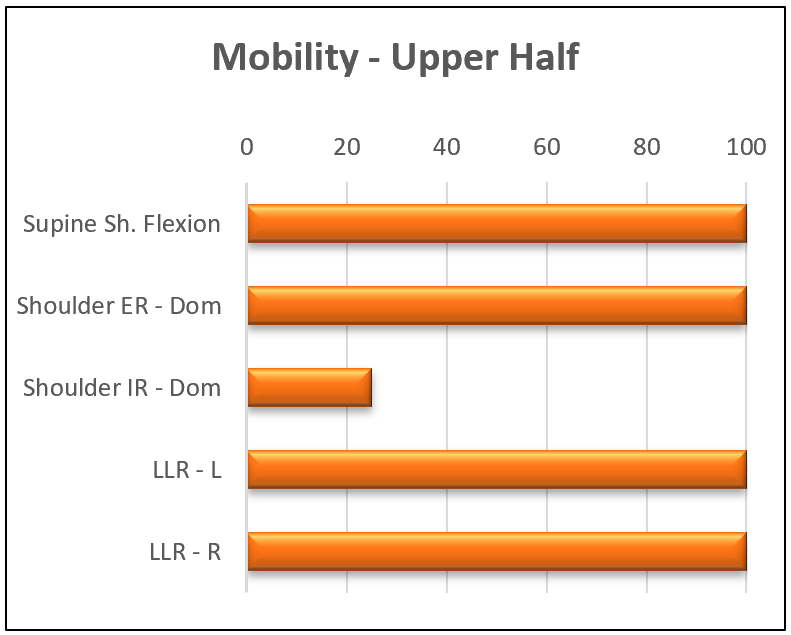
Hip ER and IR: Tight hips in general can lead to struggles with engaging the pelvis / glute and how much force can be put into the ground. In Nate’s case, he possessed insufficient ROM in his drive leg.
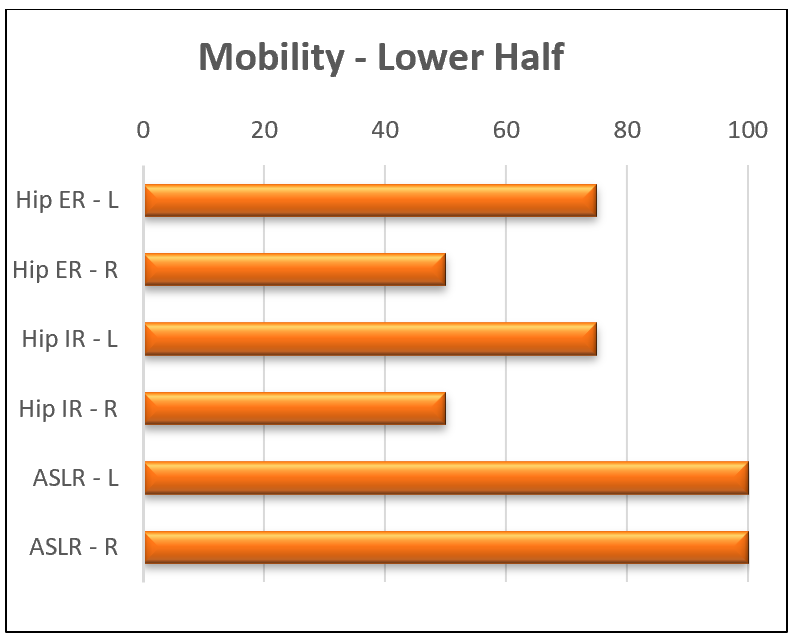
Lumbar Ext: When conducting the OH Squat test in the final part of our assessment, it was evident that Nate did not maintain the ability to keep his core braced which resulted in him over-extending his lumbar. His lumbar extension was also visible in the earlier portion of this same assessment. His core control will be something to note as we look at his mechanical delivery later on.
Strength & Power
Once the movement screening portion of the assessment was completed, it was time for us to test Nate’s strength and power production capabilities. Nate had acceptable lower half posterior strength (glutes and hamstrings) but lacked both lower half anterior (quads) and upper body strength. Providing him the proper strength exercises along with tempos and bar speeds we utilize with our Velocity Based Training (VBT) played a crucial role in his development throughout the summer.
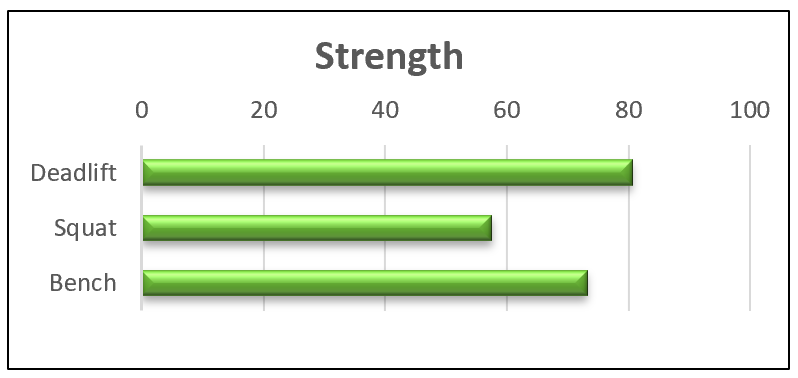
Upper Body Power: Our Proteus Motion allowed us to accurately measure Nate’s upper body power and acceleration in the frontal and transverse planes. The results below reveal inefficient power production which required further development.
Note: Since the majority of colleges/universities do not have Proteus Motion, athletes are not normally familiar with both the movements and how to effectively produce force in this part of our assessment. For this reason, we always re-test 1 week after prescribing these movements so that we can get a more accurate baseline reading.
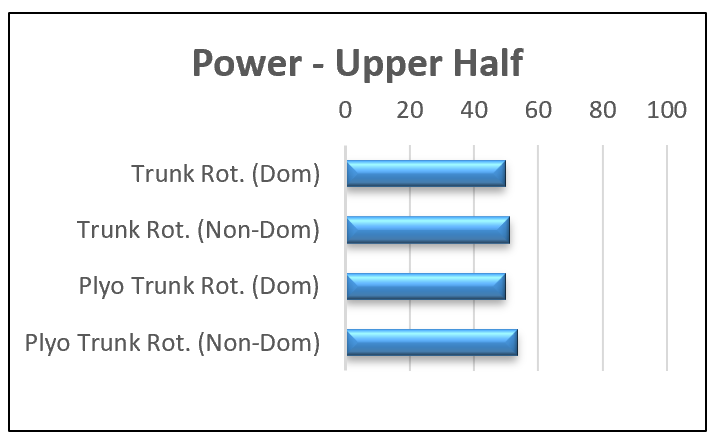
Deceleration: A pitcher’s ability to decelerate at foot plant is vital to possess both front foot stability and an efficient lead leg block. Based on Nate’s “Front Leg RSI” results from the assessment, his plyometric ability was what we consider a Phase 2. In simpler terms, he was able to stabilize quickly, but was insufficient turning it back around (amortization) into power going back up the kinetic chain.
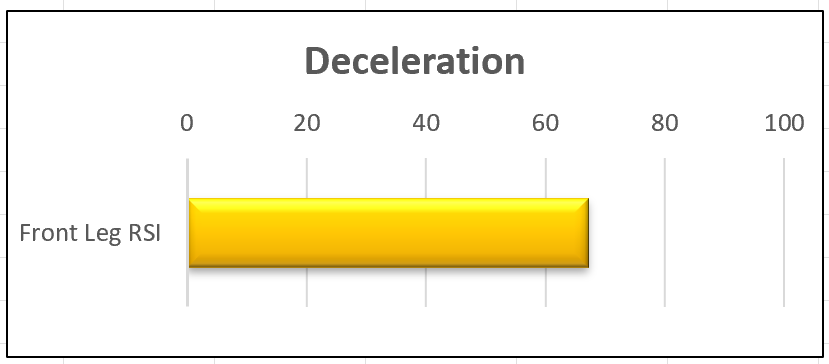
Mechanical Delivery
The final part of Nate’s assessment was his mechanical breakdown with motion capture and video analysis. Along with the video, having the motion capture data is great with being able to pick up things that are difficult to see with the naked eye such as angular velocities. This ultimately provides us with greater information as to what is really transpiring throughout his delivery.
Things he did well…
-
- Hip Shoulder Separation @ FP: Nate’s ability to separate his trunk from his pelvis was exceptional. In other words, he “closes the gap” efficiently; with his torso accelerating towards his hips through release, this slingshot effect will maximize his rotational force throughout his delivery as he transitions from foot plant to release.
- Shoulders level @ FP: Nate does a very nice job in keeping his shoulders on the same plane as he transitions from leg lift into foot plant. He has a neutral shoulders which indicates he is not throwing uphill (throwing arm lower than the glove arm) which will put his upper half in an optimal position to meet his lower half at the right time transitioning from foot plant to release.
Things he needed to work on…
-
- Weight Shift (drifting): The purpose of drifting (shifting COM) is to apply force in a linear direction as the drive phase begins. Lack of drifting can cause the pitcher to rotate the pelvis early in the delivery, contributing to both velocity and command issues.
- Pelvic/Glute Engagement Timing: Nate lacked the ability to effectively distribute his weight on his back leg/foot. Because of his hip ROM issues, we found in his movement screen, he could not properly hinge at the hips.
- Trunk Stack/Forward Tilt @ FP: Also known as “trunk stack”, this is defined as the pitcher’s ability to keep his pelvis and upper body “stacked” from the beginning of the linear move all the way into FP. This could be a timing and/or mobility/strength issue.
Note: We suspect that Nate’s trunk issues were due to his excess lumbar extension which led to a lack of core control. This would come into play when Nate was transitioning from leg lift into foot plant, and you would see his ribs begin to flare (extend) and posture become arched due to a lack of anterior core strength and stability. Between the mobility and strength programs along with the drill prescription you will see below, we were able to adjust his trunk positioning which put him in a better position to maximize his trunk’s rotational capabilities.
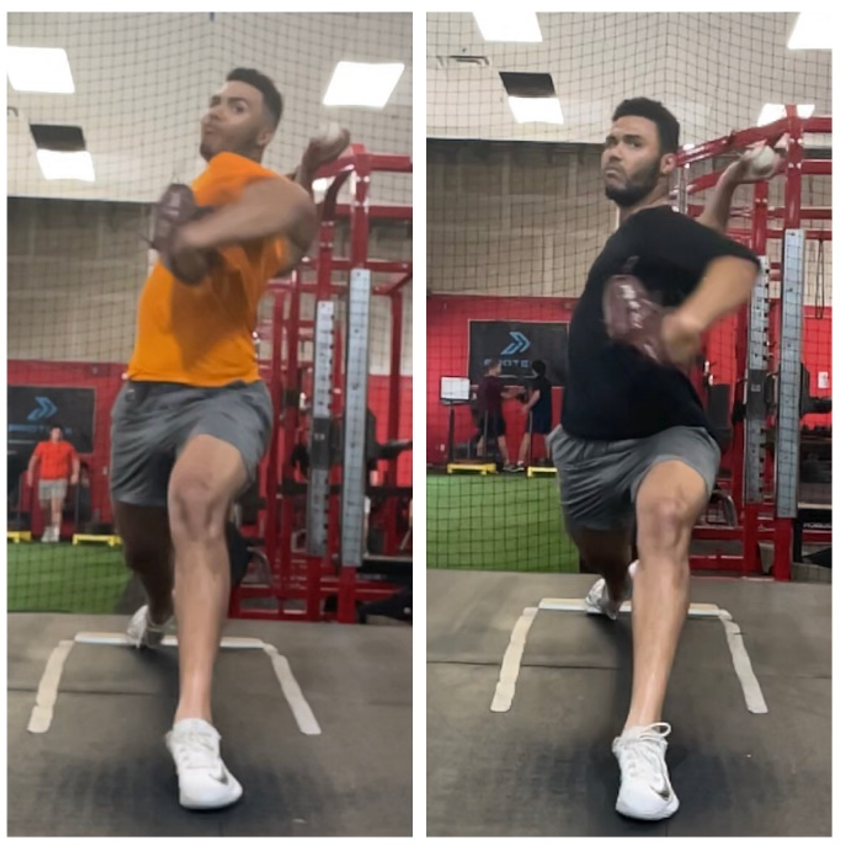
Throwing Drill work – How we addressed his movement deficiencies:
-
- Walking Torque: Used to help with linear component to all upper body mechanics and front foot position @ FP
- Rocker Drill: Used to create an efficient arm path without tensing up while also putting the trunk in a stable position @ FP
- Step Back Drill: Used to improve shifting COM (Drifting)
- Hook ’em w/ Lead Leg Counterbalance: Used to help with glute engagement and maintain a vertical shin as he descends down the slope of the mound
Summary Results
Nate came in this summer with full intention of changing the narrative on his college baseball career and he did just that. This past spring he topped out at 87 and this fall he has been up to 91. It is a testament to his hard work and perseverance.
By improving his core stability and creating more ROM in his back hip Nate was able to utilize his body on the mound very efficiently. His trunk was in a stable and stacked position that puts him powerful positions as he goes from foot plant to release. Increasing both his strength and upper body power, he created more force and optimized his rotational proficiency.
Nate is now competing with the best his arm has felt and with the hardest velo he has seen in 3+ years. We are all excited to see what the future has in store for Nate.
Best of luck big guy!
By Niko Leontarakis (Director of Pitching at RPP Baseball) and Nunzio Signore
You live too far to train with us in-house at RPP? You can now train with us on a REMOTE basis.


